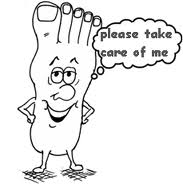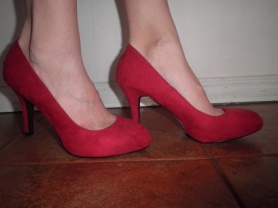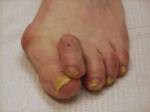 Disclaimer: This is not a sexist rant. I like men. I married one. I have sons. Their feet are pretty good – they have no choice. Some of my favourite people are men. But…..
Disclaimer: This is not a sexist rant. I like men. I married one. I have sons. Their feet are pretty good – they have no choice. Some of my favourite people are men. But…..
I’m a foot care nurse. I look after alot of feet. I really like my job. I’m not picking on the guys. We women have our own issues (read my high heels blog). But men, really? We need to talk.
- You know those favourite shoes of yours – the ones you’ve had for 10 years or more? Throw. Them. Out. Now. Get over it. Before you buy new shoes, read my page on Socks and Shoes.
- Stop tying knots all over those shoelaces that keep breaking. Get new ones.
- “These shoes were a great deal” is not a reason to keep wearing shoes that are way too big for you. Again, read my page on Socks and Shoes.
- Those cutters that electricians use to cut electrical wire? They’re for electrical wire, not toenails. (I’m not making this up)
- Same goes for the sander in your tool box. Why are you using it for your dry heels and calluses??
- Ingrown nails need to be dealt with before they become inflamed and infected.
- Regarding those over-the-counter wart and callus removers – more is not better. That’s why you’ve given yourself an acid burn and peeled off 3 layers of skin.
- When drying yourself after a shower or bath, the towel needs to go lower than your knees. Bacteria and fungus (athlete’s foot) breed in warm moist places like between your toes.
- Moisturizer is not just for women. Use it so your heels don’t look like baked, cracked clay. If you don’t want to smell like a spring meadow, there are unscented ones.
- Didn’t your mother ever tell you that socks need to be changed every day? Gentlemen, this is not how to take a girl’s breath away.
- It’s OK to have the foot care nurse look after your feet. Don’t wait ’til your wife and/or daughter yells at you. If you don’t have a wife/daughter, don’t wait ’til your feet are yelling at you.
I’m not saying that all men are hard on their feet, but this is some of what I see in my practice. Regardless of gender, we all need to be kind to our feet.
To that end, stay tuned for McDermott Footcare Productions Definitely-Not-Ready-For-Primetime vlog on caring for winter weary feet.
Copyright Terry McDermott. May not be reproduced in whole or in part without permission of author












You must be logged in to post a comment.